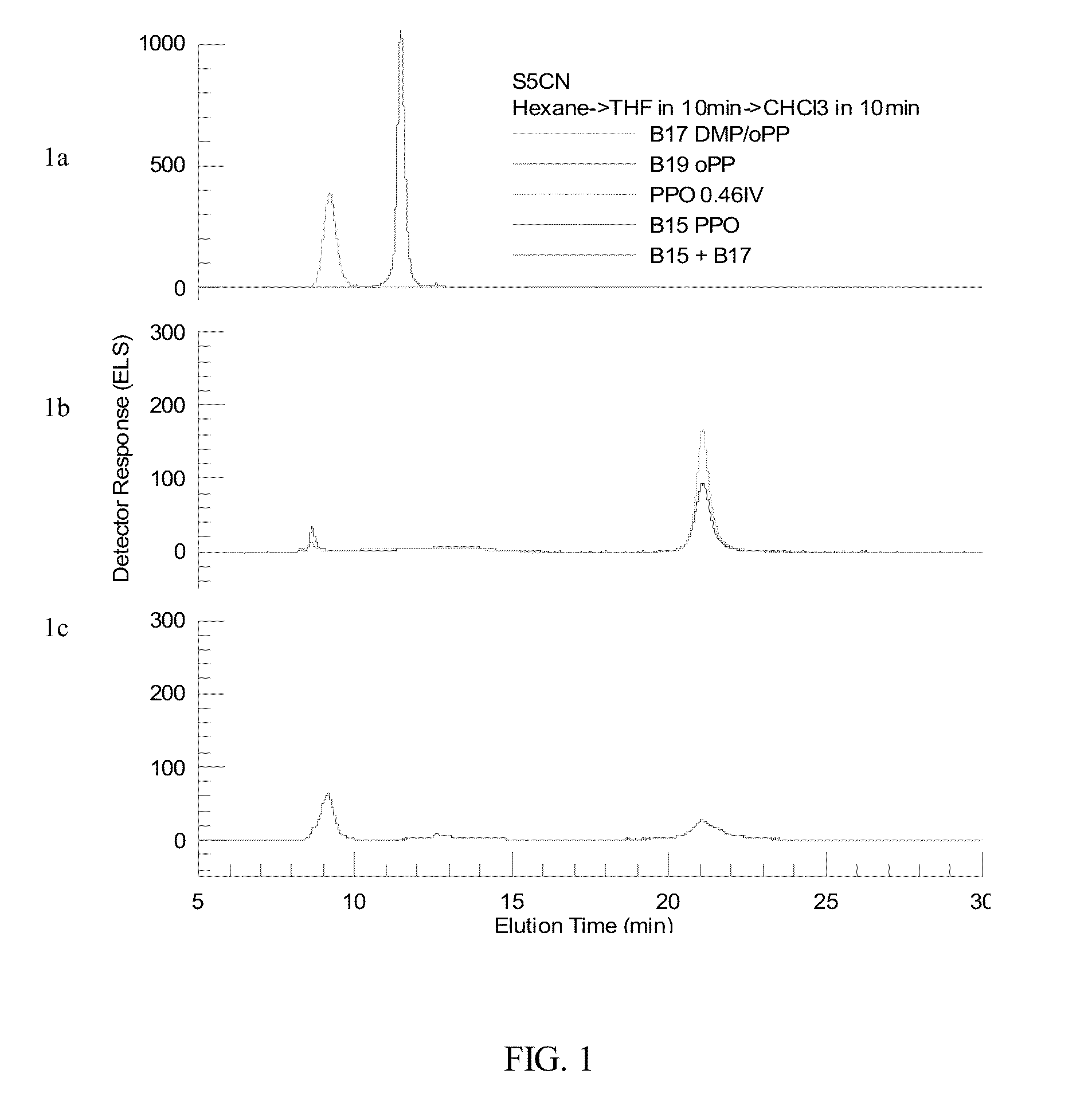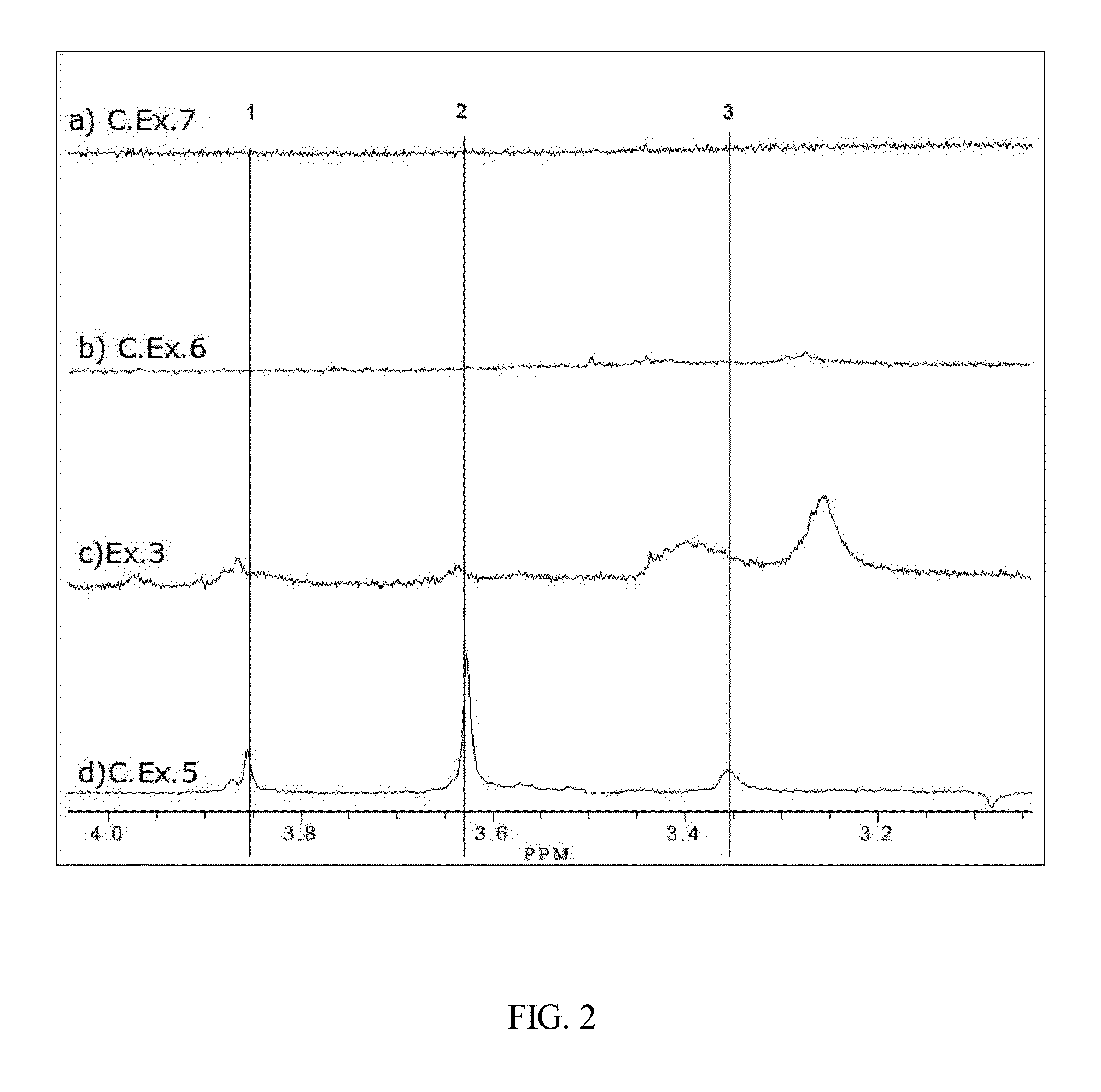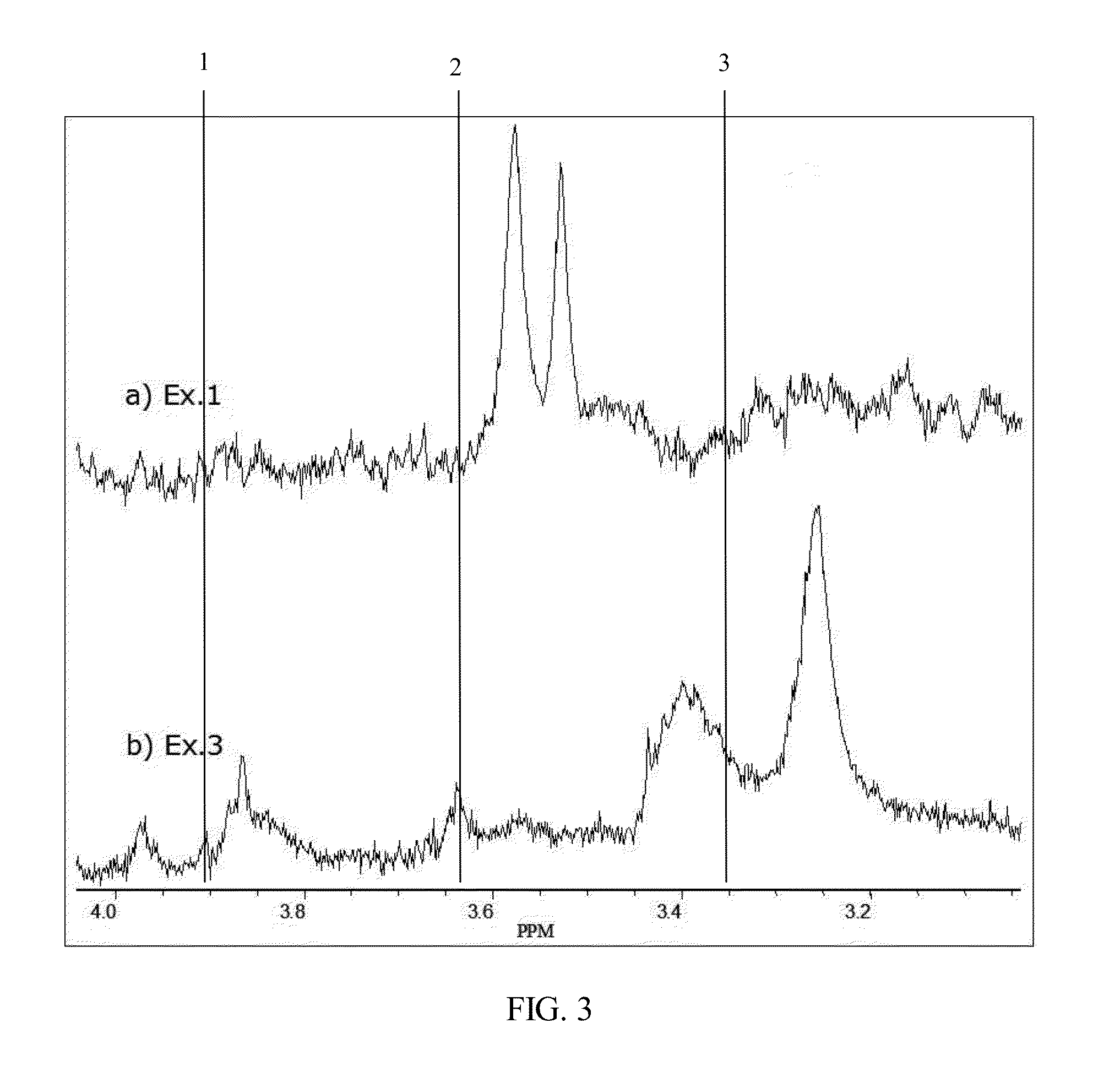Poly(phenylene ether) copolymer and method of making
a technology of phenylene ether and polyethylene ether, which is applied in the field of polyethylene ether copolymer and making method, can solve the problems of no examples of copolymers the cost of 2-phenylphenol and 2,6-dimethylphenol is more expensive than 2,6-dimethylphenol, and the cost of producing copolymers of kita is significantly higher
- Summary
- Abstract
- Description
- Claims
- Application Information
AI Technical Summary
Benefits of technology
Problems solved by technology
Method used
Image
Examples
embodiment 1
[0034]A poly(phenylene ether) copolymer comprising about 5 to 40 mole percent repeat units derived from 2-phenylphenol and 60 to about 95 mole percent repeat units derived from 2,6-dimethylphenol, wherein the poly(phenylene ether) copolymer has a weight average molecular weight of at least 8,000 atomic mass units.
embodiment 2
[0035]The poly(phenylene ether) copolymer of embodiment 1, wherein the repeat units derived from 2-phenylphenol have the structure
[0036]or
a combination thereof; and the repeat units derived from 2,6-dimethylphenol comprise repeat units having the structure
embodiment 3
[0037]The poly(phenylene ether) copolymer of embodiment 1 or 2, comprising a mole percent of 2-phenylphenol head units based on 100 mole percent total 2-phenylphenol head units and 2,6-dimethylphenol head units, and a total mole percent of 2-phenylphenol repeat units, based on 100 mole percent total 2-phenylphenol repeat units and 2,6-dimethylphenol repeat units, wherein the mole percent of 2-phenylphenol terminal units is greater than the total mole percent of 2-phenylphenol repeat units.
PUM
| Property | Measurement | Unit |
|---|---|---|
| weight average molecular weight | aaaaa | aaaaa |
| weight average molecular weight | aaaaa | aaaaa |
| temperatures | aaaaa | aaaaa |
Abstract
Description
Claims
Application Information
 Login to View More
Login to View More - R&D
- Intellectual Property
- Life Sciences
- Materials
- Tech Scout
- Unparalleled Data Quality
- Higher Quality Content
- 60% Fewer Hallucinations
Browse by: Latest US Patents, China's latest patents, Technical Efficacy Thesaurus, Application Domain, Technology Topic, Popular Technical Reports.
© 2025 PatSnap. All rights reserved.Legal|Privacy policy|Modern Slavery Act Transparency Statement|Sitemap|About US| Contact US: help@patsnap.com



